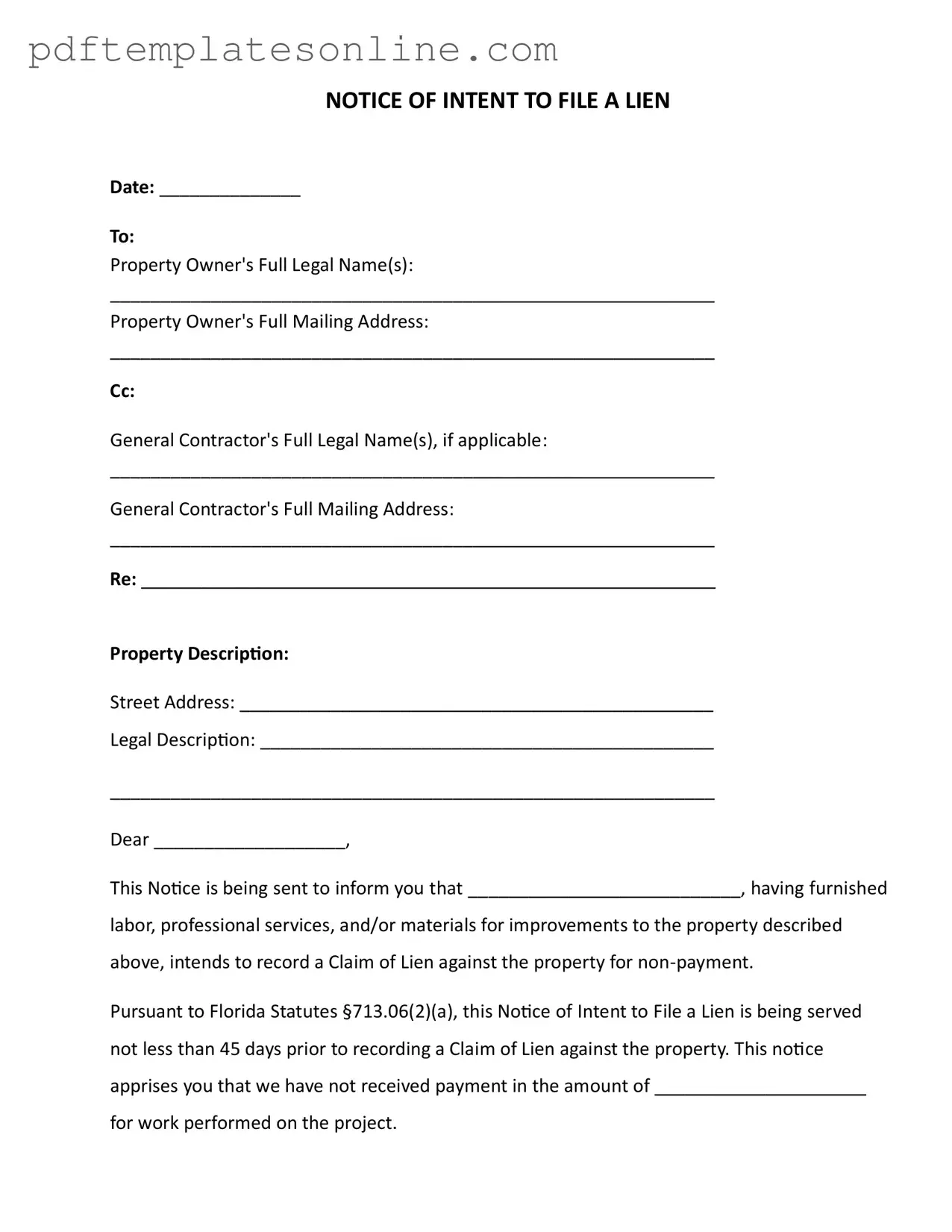Filling out the Intent To Lien Florida form requires attention to detail. One common mistake is leaving the date blank. This is critical, as the date establishes the timeline for the lien process. Without a proper date, the notice may be deemed invalid, leading to complications in enforcing the lien.
Another frequent error is failing to include the full legal names of the property owners. Incomplete or incorrect names can result in delays or even the rejection of the lien. Ensure that the names match the official property records to avoid confusion and ensure proper notification.
Providing an inaccurate mailing address is also a significant mistake. The address must be complete and correct to ensure that the notice reaches the intended recipients. An incorrect address can lead to non-delivery and potentially invalidate the lien process.
Omitting the general contractor's information, when applicable, is another oversight. If a general contractor is involved, their full legal name and mailing address should be included. This transparency helps clarify all parties involved in the project and can prevent disputes down the line.
Many individuals forget to specify the amount owed for the work performed. This figure should be clearly stated in the notice. Not including this information can create confusion and may weaken the claim, as the property owner may not understand the basis for the lien.
Another mistake is not adhering to the required timelines. The notice must be sent at least 45 days before recording the lien. Failing to follow this timeline can jeopardize the entire process, leaving the claimant without legal recourse.
Additionally, neglecting to include a certificate of service is a common error. This document serves as proof that the notice was properly delivered to the property owner. Without it, there may be challenges in proving that the notice was received, which can affect the validity of the lien.
Lastly, individuals often forget to sign the notice. A signature is essential for the document to be considered valid. Without it, the notice may be rejected, and the intended lien may not be enforceable. Taking the time to review the form carefully can prevent these mistakes and ensure a smoother process.
